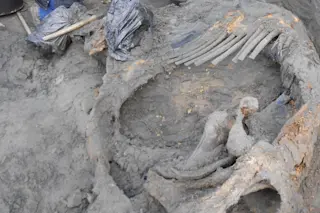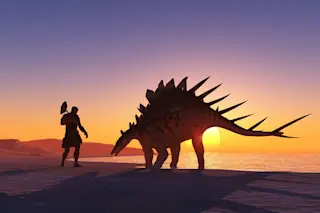A member of the Russian Academy of Science team excavates the mammoth found in northern Siberia. (Credit: Pitulko et al./Science) It was clear that the mammoth died violently. A hole in the skull, cuts to the scapula and ribs, a broken mandible and a battered tusk all point to a struggle to the death with one or more adversaries. This particular mammoth, discovered 70 degrees north of the equator in northern Siberia and radiocarbon dated to around 45,000 years ago, could provide evidence that humans were active in the region 10,000 years earlier than previously thought. While humans had reached parts of Siberia as part of their exodus from Africa by this time, they were thought to have stopped around 55 degrees north, about as far north as Denmark.
Mammoths were a treasure trove for early hunters, who would use the hairy beasts' ivory for tools and their meat and ...














